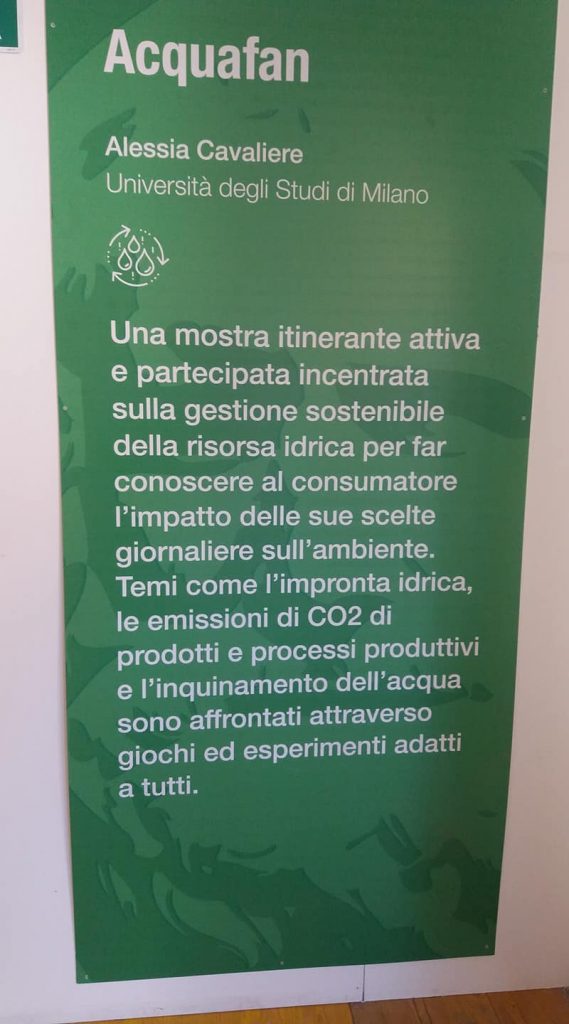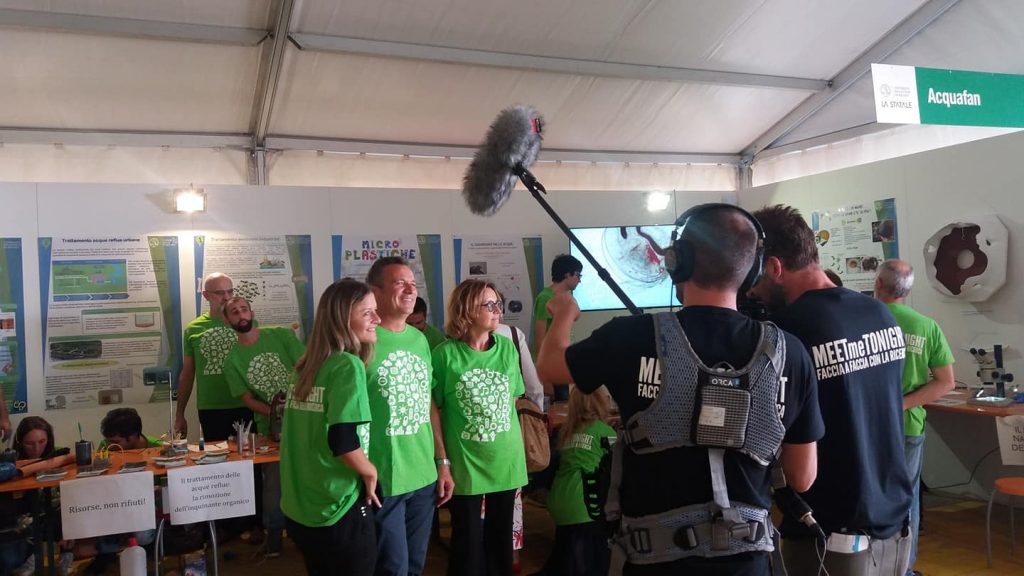According to the clear and concise definition from University of Cambridge “the term public engagement is used to describe the many ways in which the activity and benefits of higher education and research can be shared with the public for mutual benefit. “
In Italy, public engagement is called “terza missione” and it represents one of three most important goals of academic research.
Herafter we report some recent activities which gave us the opportunity to create a strong connection with the society.
FESTIVES 2021: Prof. Gervasini Group has been invited at Sorbonne Université (Paris)
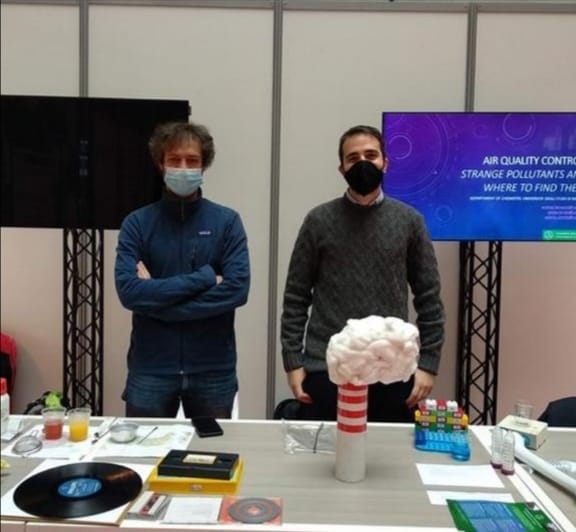
From Thursday 25th to Sunday 28th November 2021 the Sorbonne University has organized Festives 2021: a Science and Culture Festival, four days of science and culture in Paris. The guiding theme of the festival, “Let’s imagine the future!” was broken up into three general topics to explore the numerous challenges and social upheavals experienced in today’s world.
Our Department has been invited as a member of the European University Alliance 4EU+.
Our group, together with LaMPo group (http://lampo.unimi.it) and Prof. Paola Fermo group (https://pfermoca.ariel.ctu.unimi.it/) has proposed a thematic project titled The unsustainable lightness of sustainability: from green chemistry to the circular economy”- “L’insoutenable légèreté de la chimie verte”
Specifically, our group presented “The hydroxyapatite recovery cycle: waste material or key element for water and air protection?”
Chemistry may do the trick: turning wastes into useful materials. It is not easy, but it is not even impossible. The magic formula is “3 R’s strategy: Recycle, Reduce, and Reuse”. Recycle gives the wastes a new lease of life, it also reduces the volume of wastes to be managed and stocked, and allows saving raw material to make new things. In this section, a series of demonstrations/activities will be proposed to illustrate how is possible to apply the 3R’s strategy working on hydroxyapatite (HAP), an inorganic compound can be derived from biowastes. In particular, HAP provides an example of how green chemistry concepts may be coupled with circular economy principles to develop efficient strategies for environmental protection. In the first interactive activity various objects contained in a rubbish will be discussed, by identifying the ones containing HAP (e.g. bovine bone, pig bone, chicken bone, fish bone, eggshell, mussel shell). To follow, an experiment will be performed to demonstrate the ability of HAP powder for the removal of heavy metals from water (by monitoring the solution decoloring). It is not over yet, it will be shown that the as-obtained metal containing HAP can be itself recycled, serving as catalyst in another environmental protection process: the abatement of common air pollutants (e.g. nitrogen oxides). Do you think that is marvelous? The material has not finished yet! After working in chimneys and protecting our water/air quality, it will undergo a recovery process and it will be ready to restart its cycle!
Primo Levi e la poesia della chimica: A caccia di metalli pesanti nelle acque e di sostanze nocive nell’aria
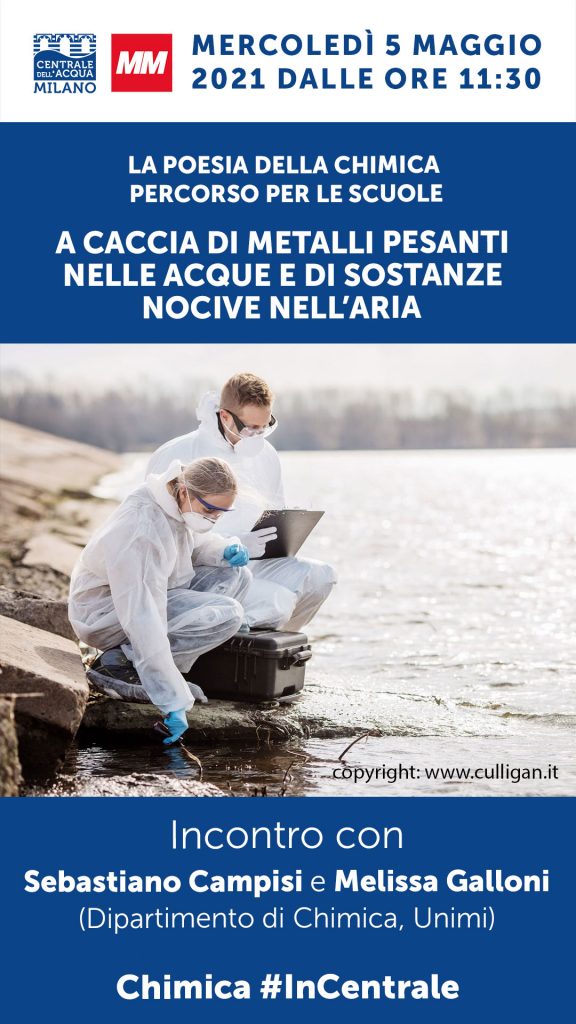
“Vincere la materia è comprenderla, e comprendere la materia è necessario per comprendere l’universo e noi stessi”- Primo Levi, “Sistema Periodico”.
Oggi alcuni di noi interverranno in prima persona nell’evento organizzato dalla Centrale dell’Acqua di Milano (https://www.centraleacquamilano.it/eventi/primo-levi-e-la-poesia-della-chimica-a-caccia-di-metalli-pesanti-nelle-acque-e-di-sostanze-nocive-nellaria/) dedicato alle scuole medie inferiori e superiori interessate in un viaggio alla scoperta degli elementi chimici.
In particolare, il nostro talk vi porterà alla scoperta di un materiale in grado di ripulire l’acqua da metalli pesanti ed inquinanti e, nello stesso tempo in una logica di economia circolare, capace di essere anche un buon catalizzatore in processi di eliminazione di sostanze nocive nell’aria. Stiamo parlando dell’idrossiapatite (HAP), uno dei componenti principali anche dello scheletro umano. Le caratteristiche di questo minerale permettono di utilizzarlo nella rimozione di metalli inquinanti presenti nelle acque. In particolare, metalli pericolosi per la salute umana come il cromo esavalente o il piombo.
L’evento verrà trasmesso in diretta dalle ore 11.30 sul canale Youtube (https://www.youtube.com/channel/UC__BsutjyiC6Q-izZ8NpG8Q) e sulla pagina Facebook (https://www.facebook.com/CentraleAcquaMilano/) e su Instagram (https://www.instagram.com/centraleacquamilano/). Seguiteci!!
Trasmissione “BREAKING LAB”
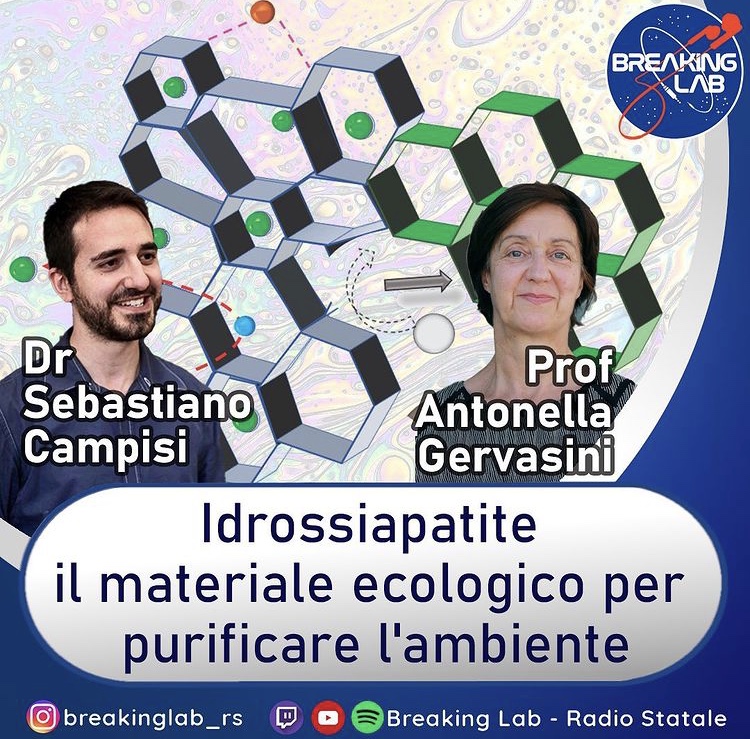
La Prof.ssa Antonella Gervasini insieme al Dr. Sebastiano Campisi sono stati intervistati per una puntata della trasmissione “BREAKING LAB”, programma di Radio Statale. L’evento è stato mandato in onda il 4 Marzo alle ore 18.00. Il fulcro dell’intervista verteva sull’attività di ricerca del gruppo ed era incentrato sul ciclo di valorizzazione del materiale idrossiapatitico per il risanamento ambientale di aria e acqua.
Durante l’intervista che è stata fatta da un team di studenti/dottorandi/assegnisti che gestiscono la trasmissione “BREAKING LAB”, della durata di ca. 35 min, è stata descritta l’attività di ricerca della Prof. A. Gervasini in senso generale, toccando i temi della catalisi eterogenea, con relativo sviluppo/modifica/ottimizzazione dei materiali catalitici per uso in reazioni catalitiche di conversione di biomassa e di tutela ambientale.
Particolare enfasi è stata data alla tematica dello sviluppo del materiale idrossiapatitico e alle sue tante applicazioni ambientali declinate in un’ottica di economia circolare.
Dopo una breve descrizione della composizione, proprietà strutturali e fisiche dell’idrossiapatite, l’accento è stato posto sul suo uso come adsorbente di metalli pesanti e tossici presenti nelle acque reflue provenienti da svariate lavorazioni industriali e come catalizzatore eterogeneo per processi di tutela ambientale per l’abbattimento di inquinanti come NOx, composti organici volatili, CO2. I benefici dell’utilizzo di questo materiale sono associati alla sua biodisponibilità e facile sintesi in laboratorio, biocompatibilità e infine smaltimento con impatto zero sull’ambiente.
Si è da ultimo discusso sulle attività future del gruppo di ricerca che costituiranno le prossime sfide negli anni a venire.
E’ possibile ascoltare il podcast come pure visualizzare il video su alcuni canali/piattaforme: https://linktr.ee/breakinglab_rs
Canali social della trasmissione:
Facebook: https://www.facebook.com/BreakingLabRS/
Instagram: https://www.instagram.com/breakinglab_rs/
Youtube: https://www.youtube.com/channel/UCBcvVS3oMvxTGII3d110BdA
Spotify: https://open.spotify.com/show/6fWzYfFqi0C68ucQAbymwr
Meet Me Tonight 2020
Expand your mind, expand your interests
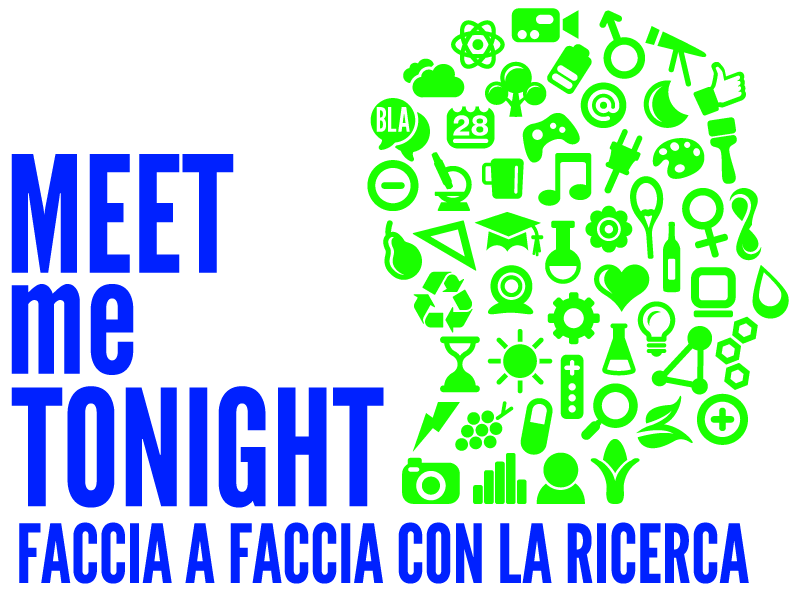
All members of Prof. Gervasini Group have been directly involved in the 2020 edition of Meet Me Tonight – Faccia a faccia con la ricerca.
The Group contributed with a short video that has been screened during the activity organized by Dipartimento di Chimica and titled “Chimica ambientale e chimica verde: dalla sostenibilità all’economia circolare“.
For more info, please visit the website: https://www.meetmetonight.it/chimica-ambientale-e-chimica-verde-dalla-sostenibilita-alleconomia-circolare/
UNICHINA-2020
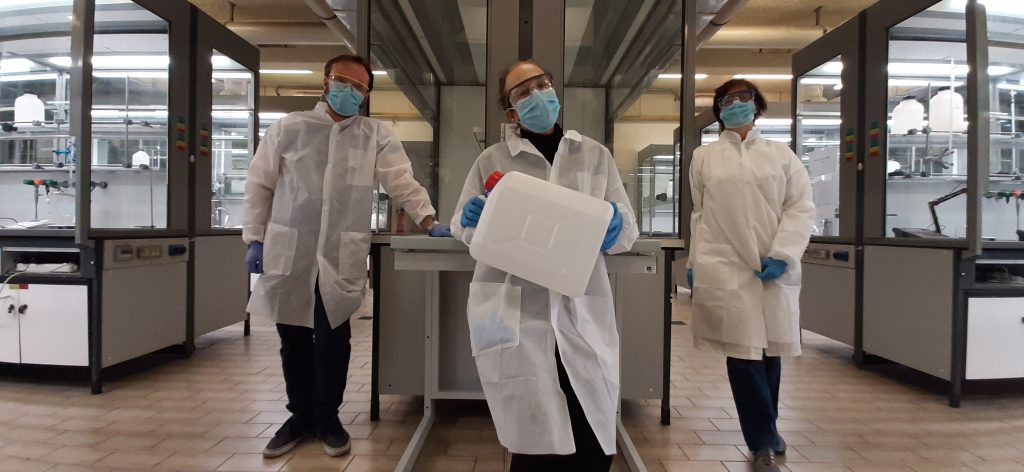
Prof. Antonella Gervasini was member of one of the several teams of researchers from our Department, which contributed to prepare hand sanitizer (against COVID-19) to be distributed in high school.
Festival della Sostenibilità 2019
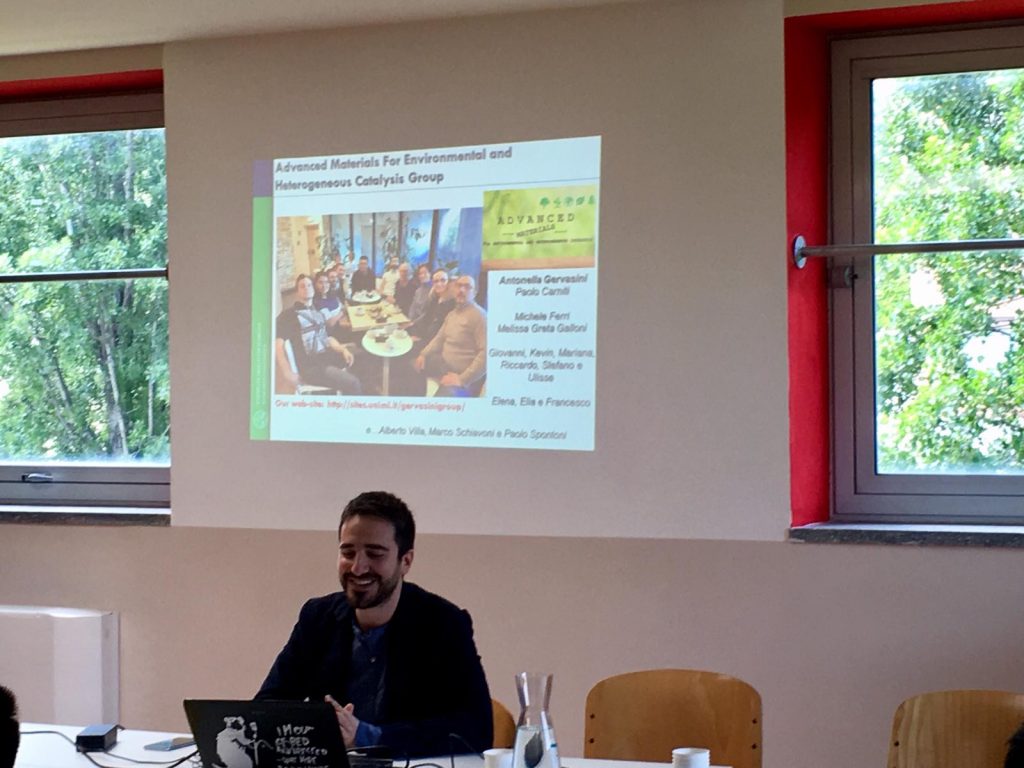
Dr. Sebastiano Campisi was an invited speaker at Festival della Sostenibilità, an interesting opportunity to share with public our research in the field of Sustainable Chemistry.
Meet Me Tonight 2018
Sebastiano, Melissa and Michele represented our group at MeetMeTonight event, one of the most important national festival aimed to inform the public about the scientific work of researchers.
Here you can find a video presenting some nice pictures of these amazing days we shared with the guys of Dipartimento di Scienze e Politiche Ambientali (DESP).
https://www.facebook.com/watch/?v=1711009849022543
